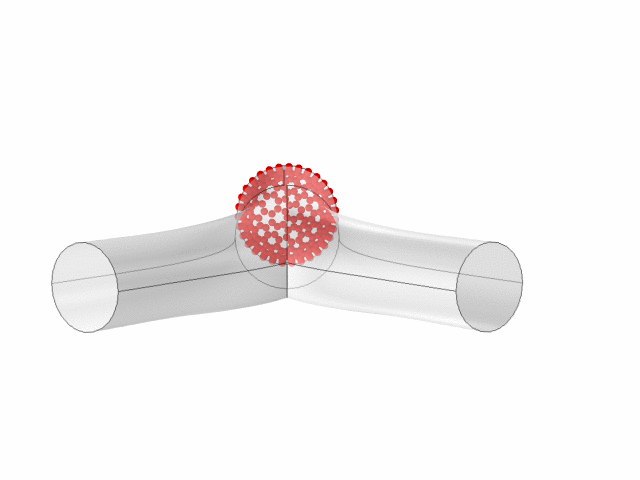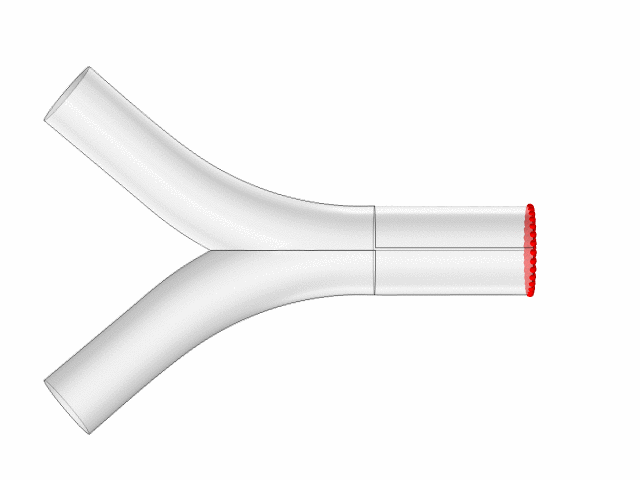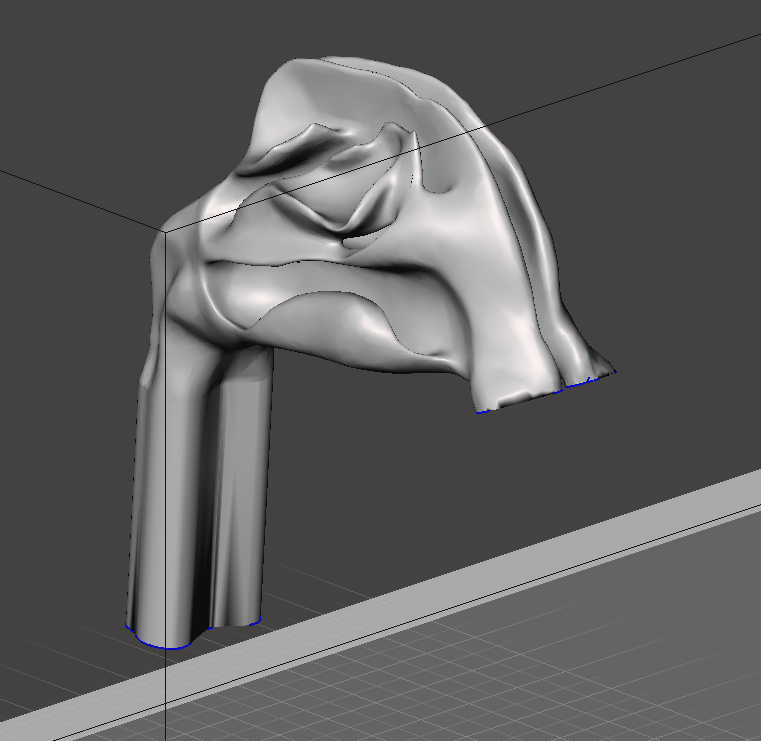Bronchial Particle Deposition
The goal of this project is to develop strategies for optimizing delivery of aerosolized drugs to various locations in the airways and lungs. We investigate the patterns of particle motion and deposition throughout the airways, resulting from the interplay between physical forces associated with gravity, diffusion, electrostatics, and viscous drag for particles suspended in a fluid flow. This project is part of an interdisciplinary collaboration with the Boston University Department of Chemistry for design and manufacture of nano- and micro-particles for targeted drug delivery.
 |
 |
Particle deposition patterns in an idealized airway bifurcation during low-velocity flows, to illustrate the impact of gravitational sedimentation on particle capture in each airway.
 |
 |
 |
Simulation of micron-sized particle transport and convection during nasal inhalation of aerosolized droplets in a CT-derived geometry of the human nasal and oral cavities.

Ventilation strategy to maximize deposition of 3 um particles (colored by velocity) in the upper airways using slow inhalation of a small gas volume.